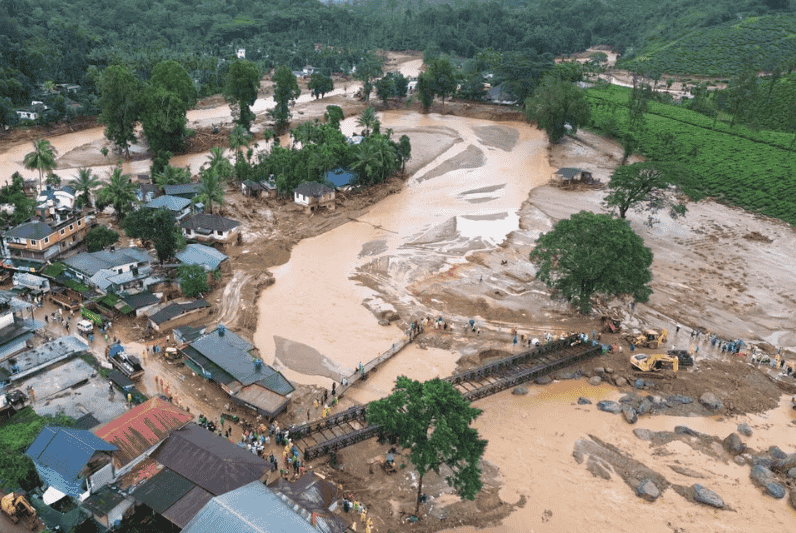Floods and Precautions
Floods are the most common natural disaster, occurring when water overflows and covers land that is normally dry. These events are usually triggered by heavy rain, fast-melting snow, or storm surges from tropical cyclones or tsunamis in coastal regions. Floods can cause severe damage, leading to loss of life and destruction of homes, infrastructure, and essential public health services. Between 1998 and 2017, floods affected over 2 billion people worldwide. Those living in flood-prone areas, buildings not designed to withstand floods, or without proper warning systems and knowledge of flood risks, are especially vulnerable to the dangers floods pose. At Royal Medical & Equipment Trading, we sell medical equipment to help people stay safe.
Types of Floods
1. Flash Floods: Caused by sudden, heavy rainfall, leading to a rapid rise in water levels that overwhelm streets, rivers, or streams.
2. River Floods: These happen when rivers overflow due to continuous rainfall or melting snow, flooding nearby areas.
3. Coastal Floods: Triggered by storm surges from strong storms like cyclones or tsunamis, pushing large waves inland.
Each type of flood poses risks to homes, infrastructure, and people, making it essential to take precautions and stay informed.
Global Impact of Floods
● Global Impact: Floods have affected over 2 billion people worldwide between 1998 and 2017.
● Vulnerable Areas: Communities living in floodplains are at higher risk as these areas are prone to frequent flooding.
● Non-Resistant Buildings: Homes and structures not built to withstand floods are easily damaged, putting people at greater risk.
● Lack of Warning Systems: Areas without proper flood warning systems are more vulnerable, as people have less time to prepare or evacuate.
Floods can cause widespread destruction, especially in areas lacking the necessary infrastructure and preparedness.
Increasing Frequency of Floods
Floods are happening more often because of climate change. As the Earth gets warmer, we see more extreme weather like heavy rain, strong storms, and melting ice, all of which lead to more floods. Warmer air holds more moisture, causing heavier rainfall, and rising sea levels make coastal flooding more likely. These extreme weather events are becoming more common and more serious, which increases the risk of floods in many areas. Climate change is making these problems worse, causing more damage to homes, roads, and the environment.
Precautions to Take Before a Flood
● Create an Emergency Plan: Develop a plan with your family that includes safe evacuation routes in case of a flood. Ensure everyone knows the nearest shelter or safe area and how to get there quickly.
● Prepare an Emergency Kit: Have an emergency kit ready with essentials like nonperishable food, bottled water, a first aid kit, flashlights, batteries, necessary medications, and hygiene products. Make sure the kit is easy to carry in case of evacuation.
● Protect Important Documents: Store important documents such as identification, insurance papers, and property deeds in waterproof containers or sealed plastic bags to prevent water damage.
● FloodProof Your Home: Install flood barriers, seal basement walls with waterproof compounds, and consider elevating electrical appliances. Use sandbags to direct water away from your property if possible.
● Stay Informed: Monitor weather reports and flood warnings. Sign up for local alerts to stay updated on any flood risks in your area.
Safety Measures During a Flood
During a flood, safety is the top priority. Always listen to authorities for updates and follow their instructions. If a flood warning is issued, move to higher ground immediately to avoid being caught in rising water. Never walk or drive through floodwaters, as even shallow water can be extremely dangerous. Just a few inches of water can sweep a person off their feet, and a foot of water can move a car. Floodwaters may also hide hazards like debris, open manholes, or electrical currents. Stay safe by staying informed and taking quick action to protect yourself and your family.
Conclusion
Understanding floods and being prepared is essential to protect lives and property. Floods can happen suddenly and cause severe damage, but knowing the risks and taking precautions can reduce their impact. By staying informed about weather updates, creating an emergency plan, and securing your home, you can safeguard yourself and your family. During a flood, follow safety instructions, and avoid dangerous areas. After the flood, be cautious when returning home and assess any damages carefully. Being proactive and prepared can help minimize losses and ensure the safety of your loved ones during such natural disasters.

